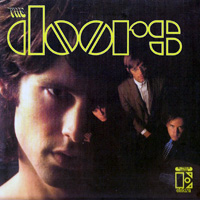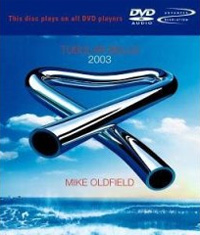 |
| April 1, 2008 Ultra Sounds: The Quest My audio quest began when I was in high school. I liked music, played clarinet in the school band, and had started to hang out at the college record shop in Chapel Hill, North Carolina. There I was introduced to the magnificent sounds of Vaughan Williams’ Sinfonia Antartica -- a Decca mono LP with Sir Adrian Boult conducting the London Philharmonic -- and Walton’s Belshazzar’s Feast (the same conductor and orchestra, but contractual difficulties meant that the LPO had to be renamed the Philharmonic Promenade Orchestra for this Westminster release). The older guys in the shop -- probably college students or dropouts -- delighted in seeing my hair stand on end and my eyes glaze over as the mighty organ passage in the Vaughan Williams roared out from two 15" Tannoy speakers. They spurred me on, and it wasn’t long before I was spending my lunch money on Leon Fleisher’s recordings of the Brahms piano concertos. After that, it was full speed ahead. But I began to notice something peculiar: Some LPs gave me goose bumps, and some did not. Early on, I learned that all recordings are not created equal. Then began my quest for the best -- a search that, 50 years later, is still very much part of my life. Stereo came in, so it was time to junk all my mono LPs and trade them in for two-channel replacements. By then I was a total audio junkie. My tastes now encompassed pop music -- I discovered Peggy Lee, Stan Kenton, June Christy, soundtracks (my first was Alfred Newman’s The Captain from Castille, on Mercury LP), and some rock (though that addiction didn’t begin until after college). But my ultimate quest for perfection had to do with classical music. To find the best, I had to hear every recording of each masterwork -- the best-played and, of course, the best-sounding. But this was not solely about the sound -- I wasn’t one of those weirdos. It was about how the sound served the music. The music was first, but in order for the music to be reproduced faithfully, the sound had to be perfect. I was unhappy with vinyl. It was OK for the bigger sounds, but when a solo flute was playing against sparse accompaniment, the sound could be obliterated by clicks, pops, and hiss. Dolby eventually helped with the latter, but not even the most sophisticated black box -- I tried them all -- could remove those transient spikes caused by scratches, bumps, and bubbles. I gave up on US pressings, ordering more expensive ones from Europe and the UK. This was expensive, but, I had my priorities straight: recordings first, then the rent, then maybe the phone. I was often without things, but never without a decent audio system or discs to play on it. I switched to reel-to-reel tape, which made me happier but still not ecstatic. My happiest memories from my crazy audiophilic path are of those halcyon days. Despite all the mistakes made by Ampex and others, I duplicated favorite titles with commercially recorded tapes; it was heaven to hear one properly transferred with Dolby Noise Reduction. The background was quiet, there were no ticks or pops -- no sounds that didn’t pertain to the music -- and the bass was more tangible because no one had to worry about a cutter head overheating. But, alas, reel-to-reel faded, to be replaced by the new little kid on the block: the audio cassette. I bought a lot of those, too, but that little strip of tape just couldn’t hold what I wanted to hear. Then came the Compact Disc. Finally, I was near ecstasy. There were no clicks or pops, no background noise unless it was on the master tape, no damaging of fragile vinyl while searching for a specific track, no waiting forever as a tape was fast-forwarded or rewound. You pushed a track number and, instantly, music! But the sound wasn’t quite right: there was no air around the instruments, and the overtones weren’t correctly transferred. Those first CDs gave me lots of digital-angst headaches. Engineers began to come up with workarounds to make the basic "Red Book" CD standard sound better than it had any right to, and many of these worked. I treaded water for a while, then heard about DVD-Audio and SACD. I knew they were for me. DVD-Audio and SACD provided me with the best of both worlds: analog warmth and digital stability. Not only that, but multichannel sound. I’d already experimented with that way back in the stereo vinyl era, when you could buy any number of black boxes that would send ambient sound to the rear speakers. I was already delighted with film surround sound at home -- multichannel music from SACD and DVD-A would be Valhalla for me. But support for those formats waned, and today they are niche products -- a niche of which I am a charter user. Still questing, I’m now getting into digital downloads, the Slim Devices/Logitech Squeezebox, and everything associated with getting good sound without any disc at all. Now it’s all about digital files -- I’m looking at the ways I can use iTunes and files downloaded from the Internet to attain great sound. The results aren’t there yet, but I know that they will be any day, and that once I get the ultimate file -- my ultimate sound -- I’ll never have to quest again. Maybe. As I continue on this quest, I notice that my companions along the way are younger and younger -- only a third my own age, now. My contemporaries seem to have mostly buried their heads in the sand and stopped at some point. Maybe they’ve been cured. They’re bringing back vinyl, which I find terribly retrograde, and failing to support the new audio advancements that have come along. They seem to have settled on a standard while I am still looking.
The Doors -- An earlier digital remastering on CD wasn’t bad, but the latest version, a CD/DVD-A combo, reveals fantastic sounds only hinted at in earlier formats. España -- Ataufo Argenta, London Symphony Orchestra. This is one of the most flawless orchestral recordings ever made, and Decca must know it -- they’ve reissued it many times. The Decca Legends edition seems the best to me, good enough that it’s unlikely that even an SACD release could better it. Elton John: Goodbye Yellow Brick Road -- Either the multichannel SACD/CD or DVD-A fills the bill. I prefer the DVD-A for its slightly smoother sound, and for having the entire two-LP set on one side of the disc. I never thought anyone would give such careful attention to this favorite.
Pink Floyd: Dark Side of the Moon -- The multichannel SACD/CD is about as good as it’s going to get for this title. Prokofiev: Alexander Nevsky -- Thomas Schippers, New York Philharmonic. This one had a magnificent beginning as a CBS stereo LP, went to a miserable-sounding cassette, and has now been completely refurbished for Sony’s multichannel SACD/CD. Puccini: Turandot -- Birgit Nilsson, Jussi Bjoerling, Erich Leinsdorf, Rome Opera. The new three-channel SACD is satisfying and will be hard to beat. Ravel: Daphnis et Chloé -- Stanislaw Skrowaczewski, Minnesota Orchestra. Mobile Fidelity’s multichannel SACD/CD has ended my search for the ultimate version of this recording. Spain -- Fritz Reiner, Chicago Symphony. I’ll get lots of argument here, but I think this is the best-recorded of all Reiner sessions. The new SACD leaves nothing to be desired. Muddy Waters: Folksinger -- This master has sounded good in almost every format; the current SACD stereo version has a slight edge over the others. ...Rad Bennett
Ultra Audio is part of the SoundStage! Network. |
 There are some recordings that I have
continued to buy in each new format as it has come along. These must constitute my best --
or at worst, my favorites. Though many others have come along in the past five, ten,
fifteen years, it is these that have gone the distance with me. So let me share with you
the following. I won’t list labels, because several of these have jumped the tracks
or been acquired by other labels. I’ve noted progress, however:
There are some recordings that I have
continued to buy in each new format as it has come along. These must constitute my best --
or at worst, my favorites. Though many others have come along in the past five, ten,
fifteen years, it is these that have gone the distance with me. So let me share with you
the following. I won’t list labels, because several of these have jumped the tracks
or been acquired by other labels. I’ve noted progress, however: Mike Oldfield: Tubular
Bells -- The DVD-A edition is a great remix, but there’s still room for an
ultimate edition.
Mike Oldfield: Tubular
Bells -- The DVD-A edition is a great remix, but there’s still room for an
ultimate edition.